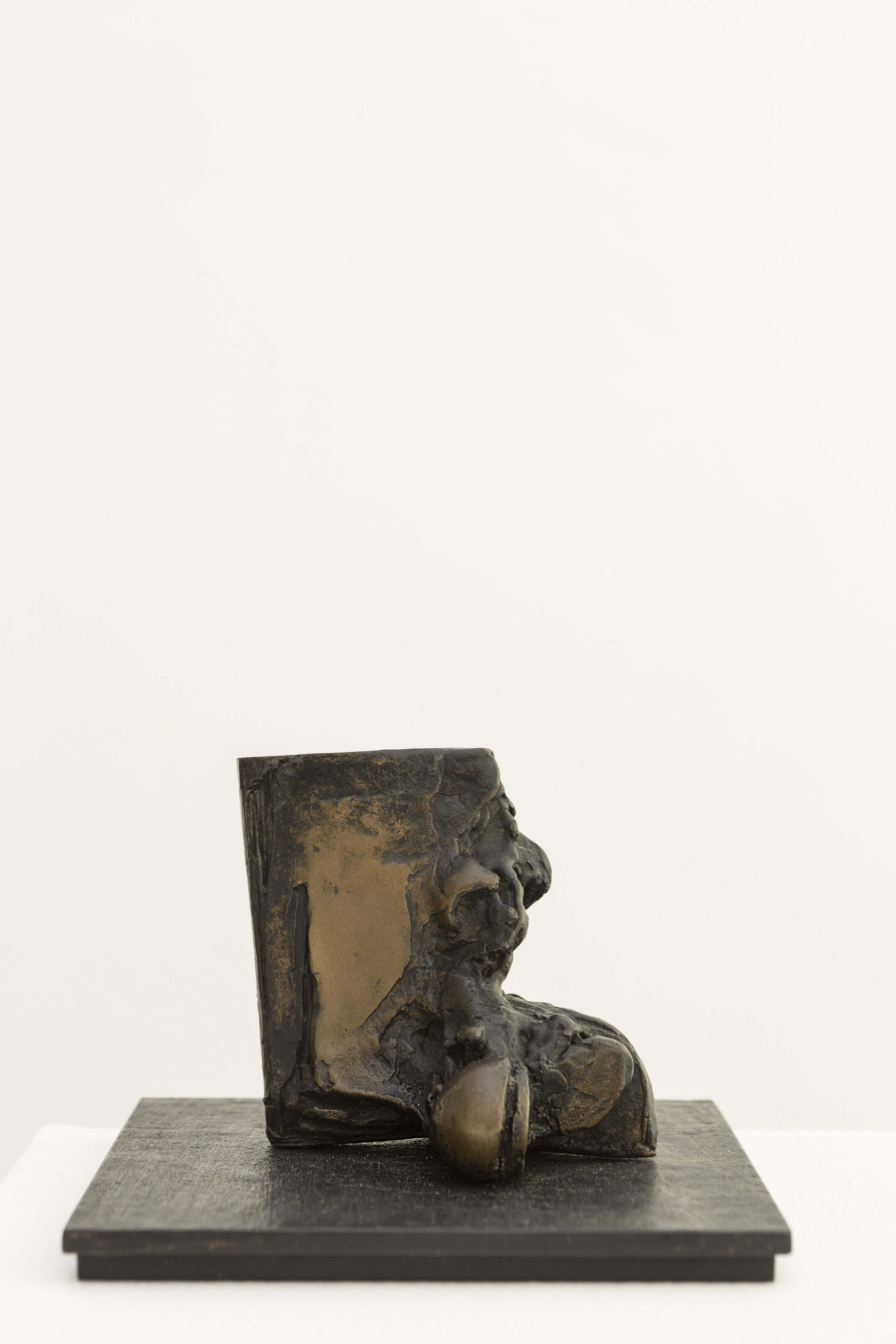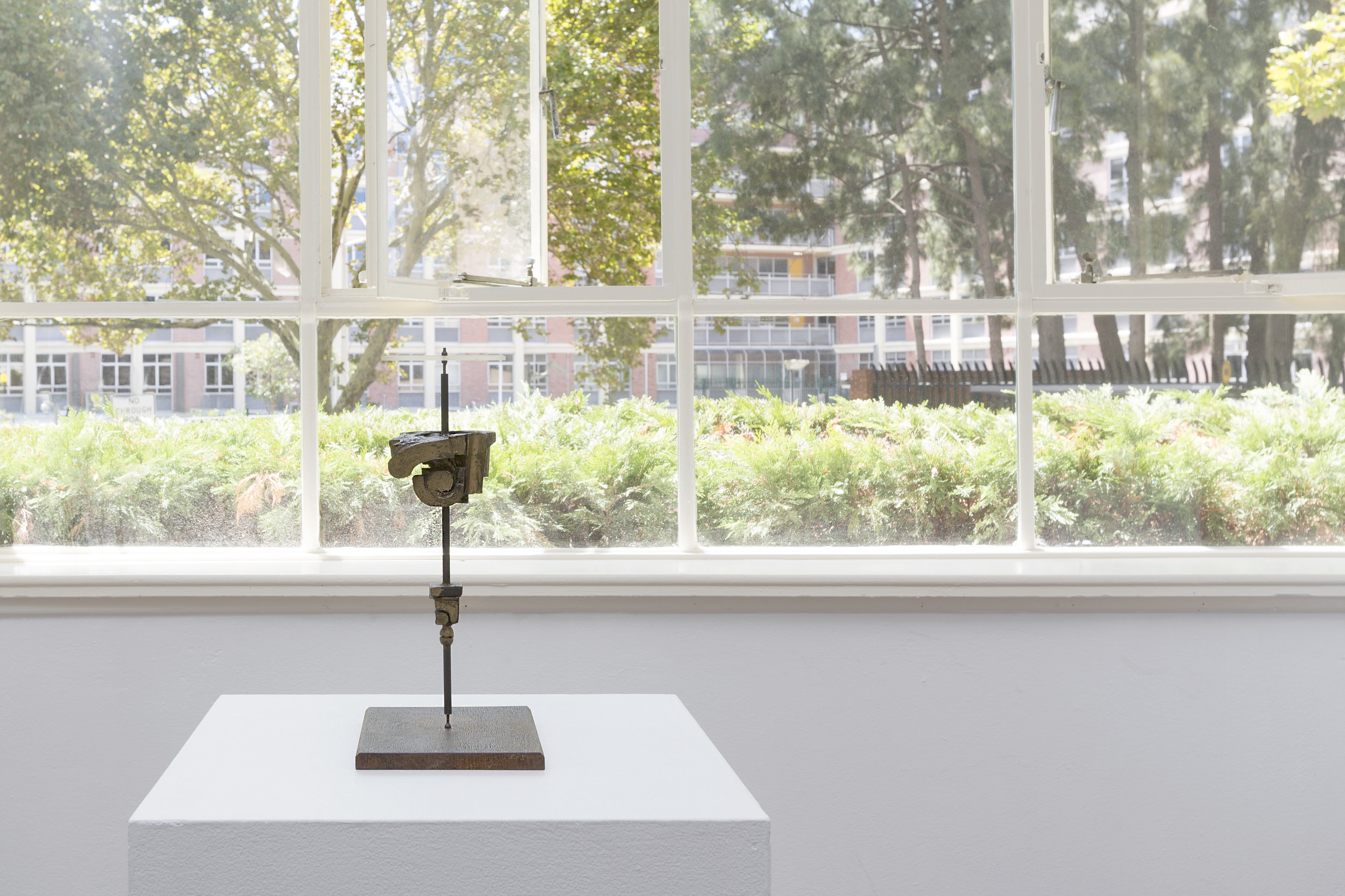Norma Redpath & Martyn Reynolds
9 February - 9 March, 2019
The origins of this show began with Martyn Reynolds’ first exhibition at Sydney in 2016. Reynolds is a New Zealand artist living and working in Vienna. When he came to visit we toured corporate architecture and commissioned sculpture in Sydney. On our walks we passed Margel Hinder’s sculpture adorning the reserve bank of Australia in Martin Place and Stephen Walker’s fountain commissioned by John Fairfax. While lounging in front of Frank Stella’s wall sculpture in Harry Seidler’s MLC building foyer, a discussion began which has continued between Vienna and Sydney over a shared fascination with postwar architecture, design and Sydney’s history. When the gallery moved to its new location in a Potts Point curvilinear modernist building, we decided to host a two-person exhibition in the apartment, pairing Martyn’s work with an artist whose work would embody the conversation begun during that first tour of Sydney.
Research led us to Australian postwar artist Norma Redpath (1928-2013), who lived and worked in Melbourne. Motivated by the desire to present the continued relevance of this work for current practices, this exhibition includes a number of Redpath’s small bronze maquettes from the 1960s to the 1980s, scattered on plinths throughout the domestic space. These works where made while Redpath was in Italy: all of them were envisioned to be realised on a monumental scale. Redpath completed many monumental public sculptures throughout Australia, including Treasury Fountain in Canberra, (1965-1969), Sculpture Column (1969– 1972), Reserve Bank of Australia, Brisbane and Landscape Caryatide at McClelland Gallery and Sculpture Park (1980–1985).
Redpath’s bronze maquettes in this exhibition express a monumental intensity. Her work Paesaggio Cariatide, 1980, (which was realised as a five metre high public work) is a perfect example of her expressive mixing of Gothic and Classical influences, and produces a compelling architectural tension. Redpath’s fingerprints make the top half feel organic and textural, yet the structure is reminiscent of a gothic cathedral’s flying buttress, resting on a staircase which asserts classical symmetry and order within the whole form.
Surrounding the room are a series of Reynolds’ aluminium wall sculptures which are cast from wooden forms in a foundry south of Vienna, Austria, by a fourth-generation family foundry dedicated to artistic production. In making these works Reynolds is informed by the longstanding practice in Vienna of sculptural reliefs made for the adornment of urban buildings, including public institutions, social housing and corporate towers. Reynolds’ work reuses the processes and artistic aspirations from a certain strand of 20th Century practice for which Redpath is exemplary: art and architecture that aspired to produce essential forms that associate with the ancient or pre-historic, as well as fantasy and sci-fi; forms that are rich in association but not referential. These practices came from a generational search for a shared human practice and experience, they connote a hope for a kind of international humanism that has become difficult to discuss or depict today.
The Norma Redpath Estate is represented by Charles Nodrum Gallery, Melbourne, Sydney would like to thank Charles Nodrum and Kate Nodrum for their generous support in loaning the work which made this exhibition possible.

























